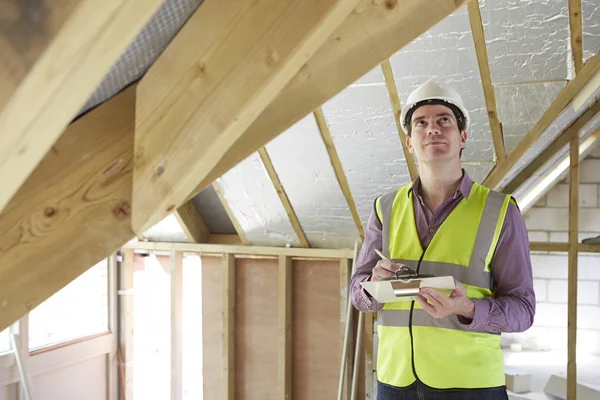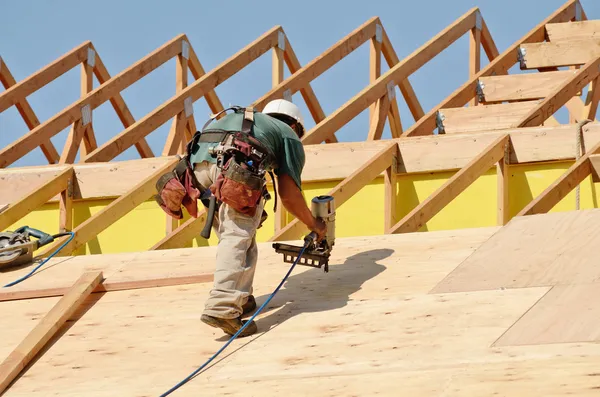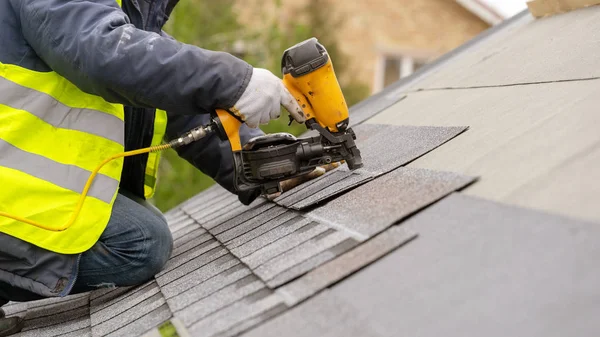When was the last time you had a professional look at your roof? The best way to keep an eye on the condition of your roof is to schedule regular roof inspections. Early detection of potential problems can save you a lot of time and money in the long term.
Details About Roof Inspections, Estimates, What to Expect
Our roof inspectors have years of experience and will thoroughly do inspections to provide you with an accurate cost estimate for roof repairs or complete roof replacement. Schedule a no-obligation roof inspection with us today so we can help you keep your house in great shape!
What to Expect During a Roof Inspection and Roofing Estimate?
If you’re a homeowner, then you know that eventually, you’ll need to have a proper roof inspection and get a roofing estimate. A proper roof inspection is a process where a certified professional takes a look at your roof and determines its condition. This can help you identify any potential problems before they become bigger issues. In most cases, if no repairs are needed, the inspector should give you an accurate roof estimate for replacement if that time comes. If there are repairs that need to be made, the inspector will give a detailed report on those as well.
1. The first thing that will happen is the inspector will take a look at the outside of your home to get an idea of the condition of your current roof. They’ll look for any obvious signs of visual damage be they roof deterioration, missing shingles, or storm damage. Other red flags that signal a compromised roof includes flashing, clogged gutters, and a drip edge.
Heads up: The roofers’ ability to accurately detect problems will be greatly enhanced by the fact that they can show you the problem areas using the latest drone technology.
2. Once they have a general idea, they’ll come inside and take a closer look. They’ll check the attic and any other areas where there might be leaks and shingle damage. The attic inspection is the house’s X-ray. This reveals any areas where water may be entering or if there is internal damage.
3. A good contractor provides high-quality service that you can trust. Plus, their rates are very affordable, so you’ll be able to get your roofing project done without breaking the bank. They will schedule a follow-up appointment with you to discuss the scale of damage sustained, the state of your roof, and provide an estimate for the cost of repair. They will devise a strategy that takes all important elements into account and fits your individual needs.
4. After receiving the estimate, you can decide whether or not to proceed.
5. After the work is completed, the inspector will come back and inspect your home again. They’ll make sure that everything was done properly and that there are no new problems.
It’s important to remember that a roof inspection and estimate are two different things. An inspection is just that – an inspection. An estimate is a formal offer to do the work, based on the inspector’s findings.
Reminder: Make sure that the contractor indicates in the estimate, the potential extra cost that might be incurred.
Your property is unique, and we think that working closely with homeowners is the best approach to developing a long-lasting roof.
Roof Inspection – How much does it cost?
A roof inspection will help you identify problems before they become costly and dangerous The price tag on a standard home or business property varied depending upon factors like location, time of year (fall/ spring), roofing material used in construction as well as other various optional upgrades that could be decided by the customer at the initial purchase stage. However, a roofing company may provide very basic inspections for free prior to completing work, lowering the national average cost of a roof inspection to $210.
Roof Inspection Costs by Inspection Type
If you’re thinking about buying a home, it’s a good idea to have the roof inspected by a professional and licensed roofer with a solid knowledge of roofing details. This is especially important if you’re buying during the wet season, as any damage to the roof may not be immediately apparent. If you suspect any damage to your roof, or if there’s been a major rain or wind storm in your area.
One of the following three options will most likely be presented to you by a roof inspector when you request an inspection.
- Physical Roof Inspection – If you have a relatively flat and easily accessible roof, you can expect to pay between $75 and $200 for a traditional physical inspection.
- Drone Roof Inspection – An inspector may use a drone to assist if your roof is too steep or potentially unstable to walk on. This type of inspection keeps everyone on the ground safe while the flying robot inspects the exterior for damage and takes pictures for you, your contractor, or your insurance company. These inspections will cost between $150 and $400.
- Infrared Roof Inspection – Roof leaks and fissures may not be noticed until severe damage has occurred. Infrared technology can spot these concerns much earlier. This will save you money on future repairs. Due to the complexities of roof repair, expect to pay between $400 and $600 for this service.
Unless you have a professional inspection, you won’t know whether you need a minor roof repair or a brand new roof. Keep in mind the following while getting a free house inspection from a roofer:
First, depending on the service, a free inspection may not be as thorough as needed to accurately assess the work required. Check with your lender or insurer to see what they require for a home inspection.
Second, always ask for references and research for an experienced roofing contractor. It’s critical to hire a reliable business with experience in the service you require. Always check for warranty options when researching roofing companies.
Finally, request a written estimate before starting any work. This will safeguard you from unforeseen charges or plan modifications.
Roof inspections are a fantastic method to learn about your home’s condition. A free inspection may not be as thorough as you need it to be, so verify with your lender or insurance company. Before hiring a contractor, always check references.
A roof inspection is a great way to get an idea of the condition of your roof and what, if any, repairs or replacements may be required. Keep in mind that a free inspection may not be as thorough as you need it to be, so make sure to verify with your lender or insurance company. Always check references before hiring a professional roofer and get a written estimate before starting any work. This will help ensure a stress-free experience.
We pride ourselves on providing excellent customer service and strive for client satisfaction. Call us today and we will schedule our expert roofers to do a high-quality roof inspection and even roof installation.



